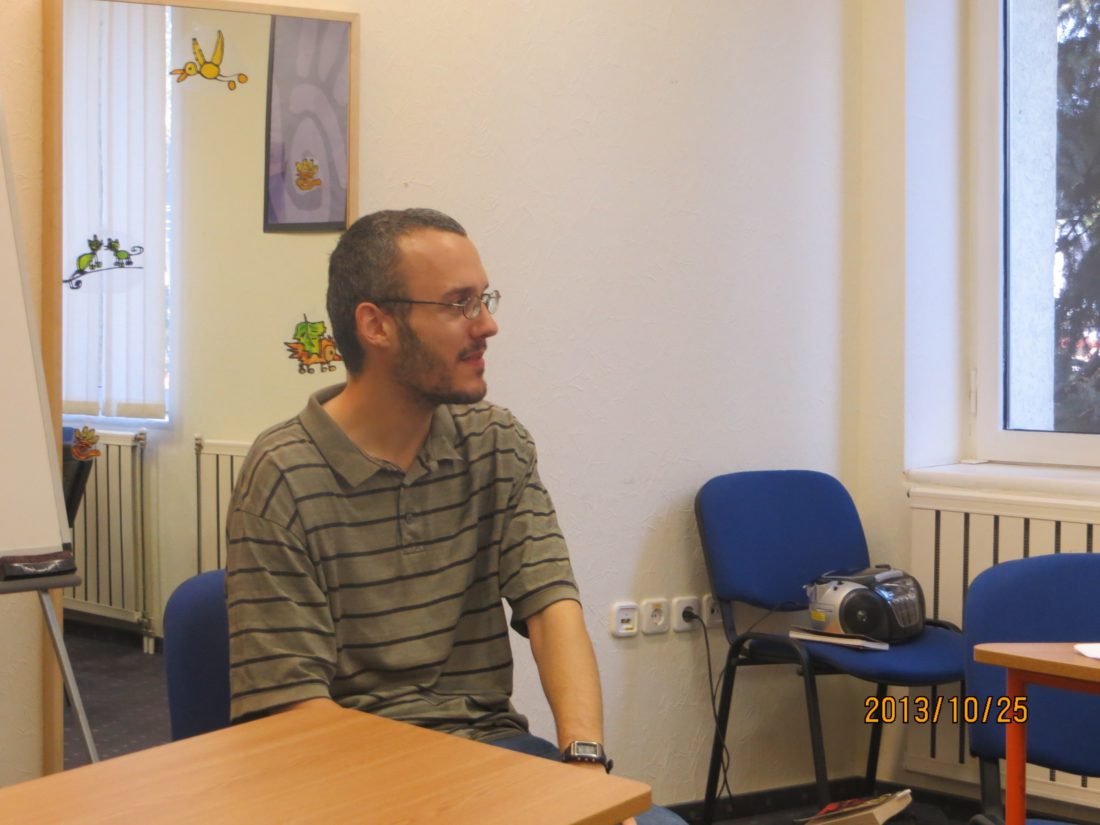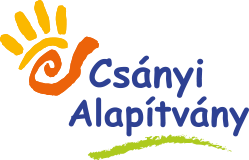
Literature Discourse
On Friday, Oct. 25, I had the opportunity to do a presentation for a group of about ten students from the Csányi Foundation. We talked about the use of literary devices such as images, themes, and mood. The students were bright and friendly, and I found them eager to share their ideas and input.
On an unseasonably warm late October afternoon, I walked through the gate outside the Csányi Foundation building, a pleasant two-story yellow house in the industrial zone behind the train station. I walked around the building and came in through the entrance in the back. In the lounge on the ground floor, I met a young man who helped me find the teacher who had been my contact to arrange my visit. We arranged the room and brought in an extra table. The students, about a dozen when they were all present, trickled in and greeted me kindly. After introducing myself and asking the students about themselves and their favorite things to read, I got started talking about different examples of imagery in writing.
In the course of our conversation, we moved from William Blake’s “The Tyger” to the Harry Potter series and The Lord of the Rings (at the suggestion of one of the students). We talked about the mood and themes of these stories. I found the students to be bright and eager to learn. They impressed me with their cooperative spirit, their friendliness, and their fluency in English. I understand that talking about complicated literary topics can be difficult for anyone, and doing so is doubly difficult in a language that isn’t one’s native language, and so I was glad to find the students were engaged with my presentation.
After a break (during which one of the staff very kindly brought me a place of snacks!) we resumed. One of the students asked me politely to speak more slowly, because some of them were having trouble understanding me. It was a good reminder, since I often forget what speaking and listening in English is like for someone who doesn’t speak the language as a native tongue–even though here I am in Hungary, where I also struggle with the language! With the input of the students, I modeled a few techniques for understanding reading: outlining, making bubble charts, and freewriting. Some of the students expressed a bit of surprise with freewriting: what were they supposed to be writing about? I tried to explain that the exercise is meant to help put ideas down on paper, and can be about absolutely anything, but they still seemed a bit skeptical!
It was a pleasure to work with the students and staff of the Foundation, who were all inviting and encouraging.
Daniel Nyikos, Fulbright scholar


